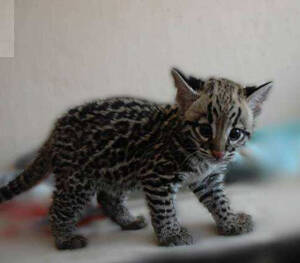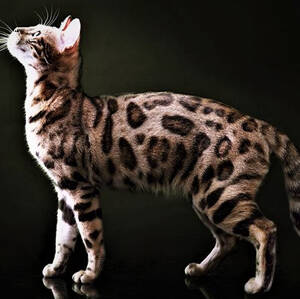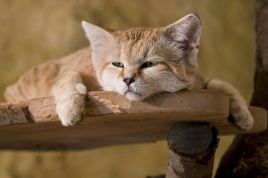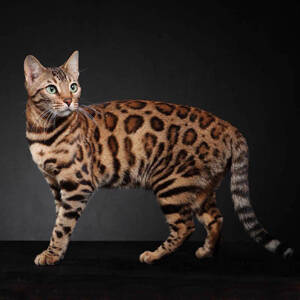
Catopuma badia
Catopuma badia,Borneo Bay Cat,Chestnut cat
Borneo Golden Cat (scientific name: Catopuma badia) is also known as Borneo ···

Felis iriomotensis(P.b.iriomotensis
Felis iriomotensis(P.b.iriomotensis,Iriomote cat
The Iriomote cat, scientific name Felis iriomotensis (P.b.iriomotensis), is ···

Prionailurus planiceps
Prionailurus planiceps,Flat-headed Cat,Flat head cat
Flat-headed Cat (scientific name: Prionailurus planiceps), also known as Fla···

Prionailurus rubiginosus
Prionailurus rubiginosus,Rusty-spotted Cat,Rusty Cat
Rusty-spotted cat (scientific name: Prionailurus rubiginosus), also known as···

Cymric
Cymric,Long-haired Manx cat, Welsh cat
The Cymric cat is also called the long-haired Manx cat. It is a long-haired ···

Turkish Angora
Turkish Angora,Turkish Angora cat
The Ankara cat, also known as the Turkish Angora cat, is one of the oldest l···

Oriental longhair cat
Oriental longhair cat
The Oriental Longhair is a new breed obtained by crossing the Oriental Short···

Balinese
Balinese,Long-haired Siamese cat, long-haired Amish cat
Balinese cats are produced by natural mutation or hidden genetic traits of S···

Chateau Cat
Chateau Cat
The origin of the name of the Chateau cat is that it is the same color as th···

Exotic
Exotic、ExoticShorthair,Exotic shorthair cat, Exotic shorthair cat, Shorthair Persian cat, Exotic shorthair
Exotic Shorthair, also known as Exotic or ExoticShorthair, was bred in the 1···

Tigertight Felis
Tigertight Felis,Syrian marble cat, tiger cat
The scientific name of the tabby cat is Tigertight Felis, which was bred by ···

American Wirehair
American Wirehair,American Wirehair
The American Wirehair cat is called American Wirehair in foreign language. I···

Felis nigripes
Black-footed cat,Small tabby cat
The black-footed cat (Felis nigripes), named for the black markings on the s···

Felis margarita
Felis margarita,Sand Cat、Sand Dune Cat,Chat des sables,Gato de las Arenas、Gato del Sahara, ArabicQit al rimal, pshaya koshka,sand cat, desert cat
The Sand Dune Cat (scientific name: Felis margarita) is known as Sand Cat, S···

Cheetah
Acinonyx jubatus
Cheetah (scientific name: Acinonyx jubatus) English Cheetah, Hunting Leopard···






